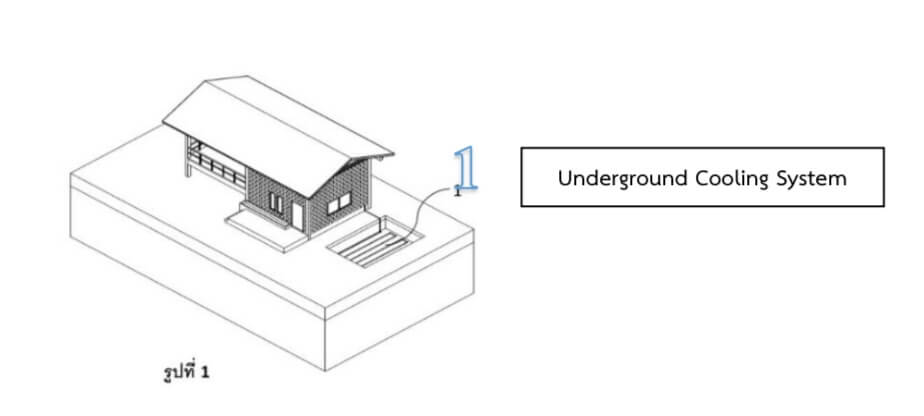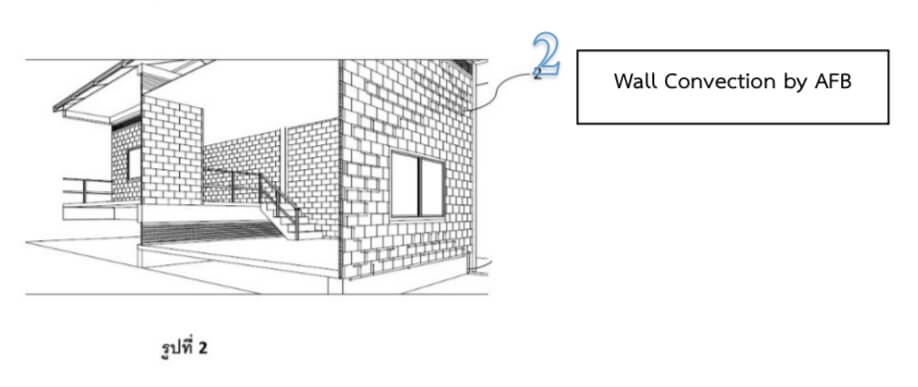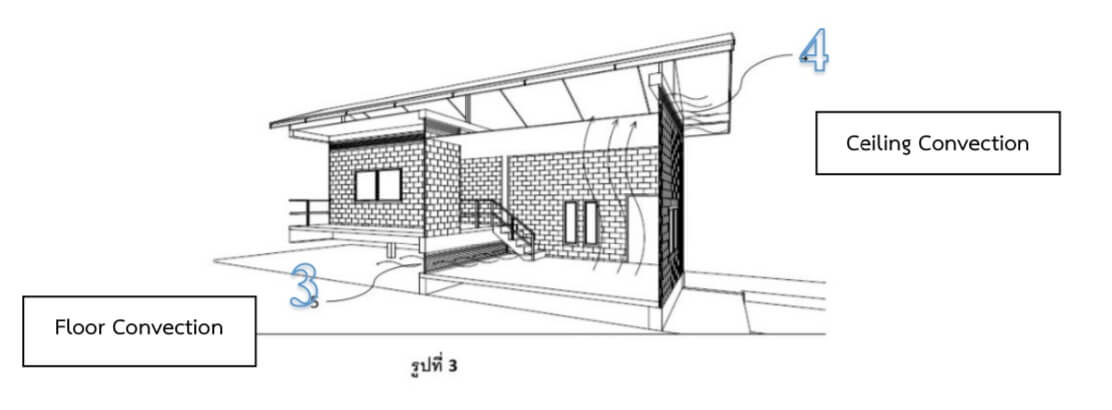1.Concept and principles
- Based on in-depth research in three main areas
- Energy-saving bricks: Air Flow Block (AFB)
- Energy-efficient homes: Passive House
- Underground Cooling System
It is the combination of the strengths of AFB bricks, addressing the weaknesses of Passive House and Underground Cooling System, and applying them together. Additionally, it incorporates knowledge from traditional Thai house designs, such as the ‘cat hole’ and ‘sliding panels under the roof.’ All these elements have been integrated to create the ‘Energy-efficient Home through Natural Methods’ (Natural Passive House),
- Patent registration number 2403003429
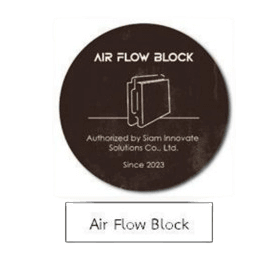
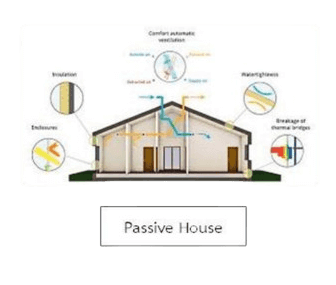
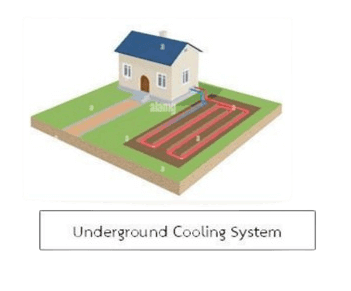
The design of the Energy-efficient Home through Natural Methods (Natural Passive House – NPH) achieves two objectives as follows:
Objective 1: To enhance the energy-saving efficiency of AFB brick walls beyond previous capabilities.
Objective 2: To address the weakness of the Underground Cooling System, which typically directly channels cool air into the house. This often leads to several issues, such as energy consumption for drawing in the cool air, such as using air blowers or suction systems. When these devices are used, an air filtration system must be installed to prevent the entry of germs or PM 2.5 dust, and humidity levels need to be controlled to prevent mold growth. Despite the use of protective systems, direct exposure can still be hazardous.
Patent for Natural Passive House (NPH)
Theories & Principles of Energy-efficient Homes: NPH
Energy-efficient home = AFB + NPH
Comfortable living, cool home: NPH 1
Comfortable living, cool home: NPH 2
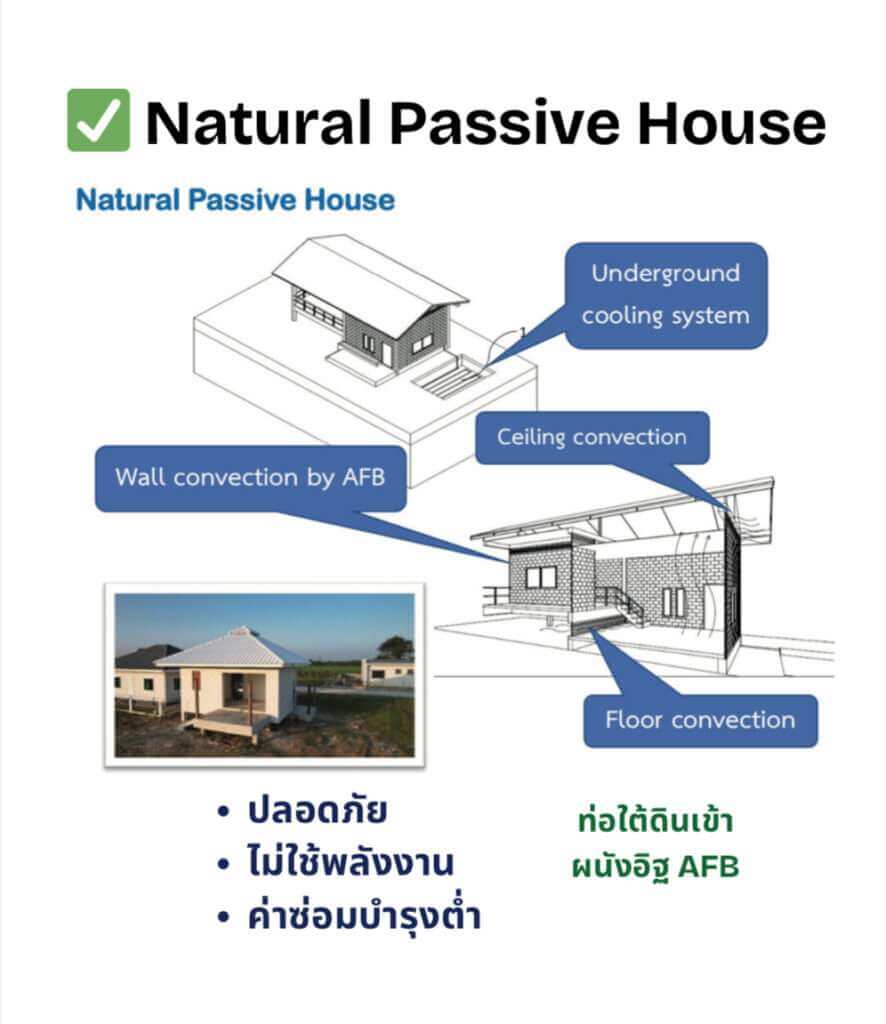
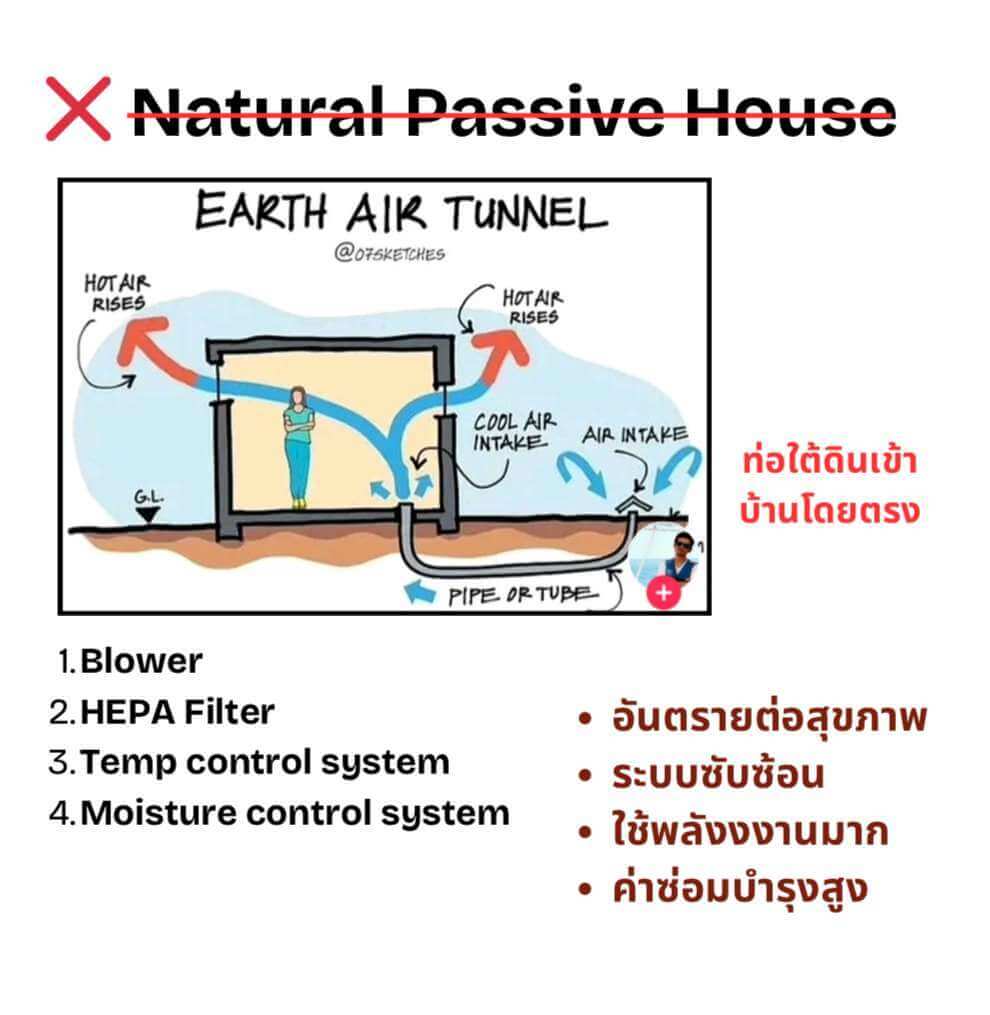
European-style Passive House
NPH differs from Passive House in 2025
2. 4 Components of an NPH Home
Energy-efficient Home through Natural Methods (Natural Passive House – NPH) has 4 key methods or conditions as follows:
- Installation of Underground Cooling System
- Wall Convection: The home must have walls made of AFB bricks, as this is the only type of wall that allows for air ventilation.
- Floor Convection: There must be vents or openings for cooling air at the floor level.
- Ceiling Convection: There must be vents or openings for cooling air under the roof.
